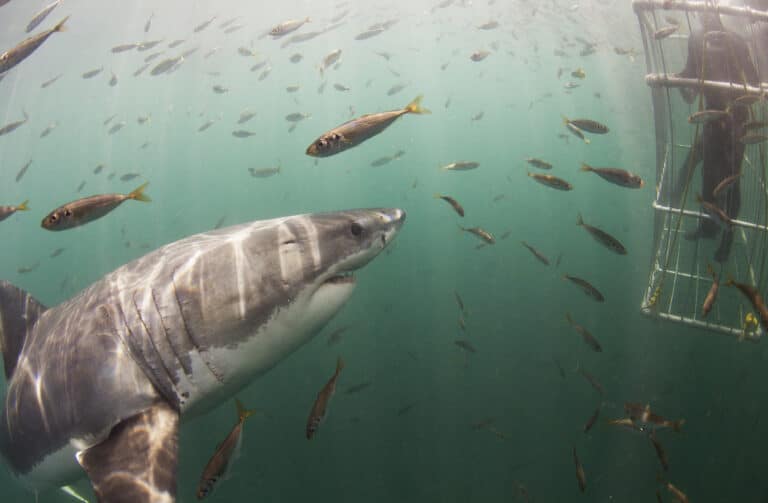By Courtney Cooper
Great White Sharks vs Orca’s
Orcas have been captivating all ocean lovers across the globe for decades. Most recently, they have fascinated the shark community by becoming the contested apex predator over the great white shark. The orca has the upper hand when it comes to predating on a great white shark as the great white is a solo animal whilst the orca hunt in groups. The question is, who is the fastest? We look at Great White Sharks vs Orca’s.
We also discuss further shark facts that you might be interested in! Apex Shark Expeditions provides the best kelp forest diving cape town and shark cage diving in Cape Town.
Who is the Fastest between the Great White Shark and Orca?
The Great White Shark can swim at an average speed of 40 km/h (2mph) and when they accelerate, they can swim up to 56 km/h (35 mph). They can swim to depths of 3,500 feet. The Great White Shark’s torpedo like shape and incredibly powerful tail allow them to move through the water at high speeds. The White Shark has 5 gill slits, 3 main fins and an anal fin. Their dorsal fin is located on their back and 2 pectoral fins, 1 located on each of their sides that assist with manoeuvring. Their tail which is also called a “caudal fin” is their most important asset when it comes to swimming fast.

They can move their tails up and down and side to side. Their skin is made of dermal denticles which are small scales that cover the shark. These denticles are made of the same material as human teeth and grow as the shark grows. Their scales face towards the tail, which reduces friction when swimming so they can move effortlessly through the water. An important note is that the Great White Shark descended from the ancient broad-toothed mako shark (the Mako shark is the fastest shark in the ocean).

The Orca can swim at an average speed of 56 km/h (34 mph). They can swim to depths of 3,200 feet. The length of the Orca varies between age and gender. Adult males can reach a length of 32 feet and weigh around 6 tons. The average length of an adult male is between 20 and 26 feet. Adult females can reach a length of 26 feet (that’s 6 feet less than the male) and weigh up to 3.5 tons. The average length of a female Orca is between 16 and 23 feet. Their bodies have a fusiform shape, which means they have a “spindle” like shape that is wide in the middle and tapers at both ends.
This shape enables the Orca to effortlessly cut through the water in an energy effort manner. The Orca’s skin is smooth with a layer of blubber underneath (3-4 inches), which adds to its shape. They have 2 pectoral flippers, one on each side used for steering and stopping. The flukes are located at the back (their tail) and is used in conjunction with the pectoral flippers to stop. The Dorsal fin is on top of the whale and can reach 6 feet tall and can aid in stability when they swim at high speeds.
In addition to their physical abilities, Orca’s who are known for their intelligence, use a swimming technique called “porpoising”. This technique enables the orcas to conserve energy and consists of the whale swimming just under the surface, then rapidly moves above the water and back down again in one swift move.
In short, the Orca is fastest when compared to the Great white Shark. Depending on these animal’s age and gender, the Orca swims 16 km/h faster. As evolution and survival of the fittest continues to take shape, one can only wonder if the Great White Shark will survive the shark eating orcas.
If you enjoyed this article, you may also be interested in our other article, where we discuss truths about sharks that might surprise you.




